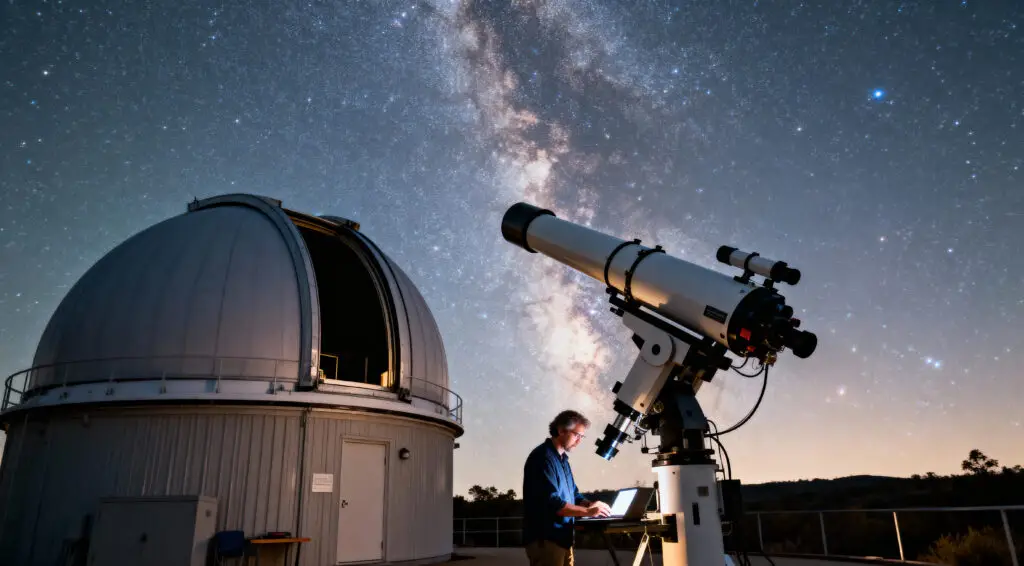Historic Discovery That Changed Planetary Science
Three decades ago, Michel Mayor and Didier Queloz announced the discovery of 51 Pegasi b, a pivotal moment in astronomy that confirmed the existence of exoplanets and initiated a global search for worlds beyond our solar system. Their work established the framework for modern exoplanet research, inspiring numerous explorers to search for Earth-like planets.
Utilizing the Elodie spectrograph, they detected rhythmic stellar “wobbles,” indicating an orbiting gas giant. Initially skepticism challenged their findings, but the data was validated, leading to the groundbreaking discovery of a planet orbiting a star akin to our Sun. This finding revolutionized our understanding of planetary systems in the galaxy.

Source: PLATO Mission
A Universe Full of Diverse Worlds
Following significant advancements in exoplanet research, astronomers have documented over 6,000 exoplanets, revealing a remarkable diversity. Discoveries include ultra-hot Jupiters with orbits lasting less than a day, tightly packed rocky planet systems, and planets orbiting twin stars, indicating that planetary systems are more varied than previously believed.
However, a true Earth twin matching our planet’s size, mass, and orbital distance remains undiscovered, with the detection of Earth-like planets posing significant challenges with current instruments. Fortunately, improvements in the precision of modern telescopes are quickly changing this landscape.
Cutting-Edge Tools Enhance the Quest
Christopher Watson and Annelies Mortier stand out as prominent figures in the quest for exoplanets today. An international consortium manages the HARPS-N spectrograph located in La Palma, Spain, disrupting centuries-old starlight to detect tiny stellar wobbles. These highly accurate instruments are capable of detecting velocity shifts smaller than the speed of a tortoise, which is crucial for identifying Earth-sized planets.
The radial velocity method detects the slight movements of stars caused by the gravitational influence of planets in orbit around them. By integrating this approach with transit observations from space telescopes such as Kepler and TESS, researchers can ascertain both the mass and radius of far-off planets, enabling them to simulate their possible compositions.
Recommended Article: Green Tech Boom Fuels Hidden Crisis in Lithium Regions
Innovative Campaign Aims at a Planetary Twin
Didier Queloz is leading the Harps3 project at La Palma’s Isaac Newton Telescope, which aims to discover Earth-like planets. The instrument’s design allows for the detection of minute velocity shifts below 10 cm per second, enhancing astronomers’ ability to locate planets with Earth-like characteristics and the potential for supporting life.
Researchers anticipate that thorough observations over the next decade could lead to the identification of a true Earth-like planet orbiting a Sun-like star.
Insights Gained from the Trailblazers of Exoplanet Research
The text outlines the evolution of human understanding of the universe, beginning with early astronomical ideas. Thinkers like Epicurus proposed the existence of infinite worlds, contrasting with Aristotle’s belief in the uniqueness of Earth. The 20th century brought significant changes, leading scientists to expect planets around most stars, challenging anthropocentric views.
The rapid advancement of technology has allowed the astronomical community to acknowledge the foundational work of early pioneers, particularly highlighting the pivotal research by Mayor and Queloz, which is critical to modern exoplanet studies.
Where Engineering Precision Converges with Cosmic Scale
Identifying planets similar to Earth demands exceptional engineering skills. Instruments such as Harps-N and Harps3 are required to monitor velocity variations of far-off stars with precision down to millimeters per second. Repeated measurements over the years enable scientists to differentiate planetary signals from the noise produced by stars.
In the meantime, space telescopes monitor thousands of stars at once, looking for brightness dips that indicate the presence of planetary transits. The integration of these complementary techniques provides astronomers with an optimal opportunity to pinpoint small, rocky planets that share essential characteristics with Earth.
A Ten-Year Journey Towards a Groundbreaking Revelation
Following thirty years of exploration, scientists are nearing the ultimate goal in astronomy: the identification of a genuine Earth twin. Researchers are confident that identifying such a world is now a matter of “when,” rather than “if.” The emergence of instruments such as HARPS3 signals that the upcoming decade may usher in one of the most remarkable scientific breakthroughs of our time.
Discovering another Earth would revolutionize humanity’s comprehension of life in the universe and our role in it. With Watson, Mortier, and Queloz at the forefront of this new era, the search for our planetary twin advances with enhanced accuracy and optimism.























